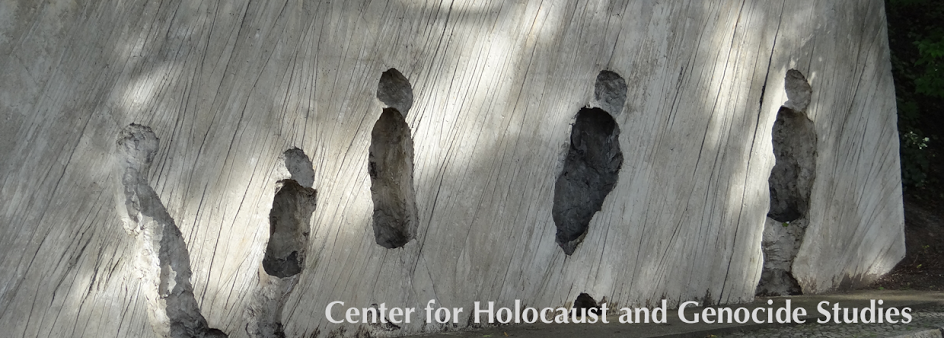The Turkish systematic extermination of its minority Armenian subjects from their historic homeland in the territory constituting present-day Turkey between 1915-1923 can be defined with one word: genocide. Is this by now an incontestable statement? Over the last century, the surviving Armenian communities, spread across the globe as part of one of the world’s largest diasporas, have struggled to gain official recognition for the genocide. Along the way, Turkish nationalist organizations have fought recognition. Instead these organizations push for reconciliation, which merely serves to perpetuate denialist propaganda as it distracts from Turkey’s role in committing genocide.
Bystanders, Rescuers or Perpetrators? The Neutral Countries and The Shoah
Edited by Corry Guttstadt, Thomas Lutz, Bernd Rother, Yessica San Román
 This volume offers a trans-national, comparative perspective on the varied reactions of the neutral countries to the Nazi persecution and murder of the European Jews. It includes a chapter by CHGS director Alejandro Baer and historian Pedro Correa entitled “The Politics of Holocaust Rescue Myths in Spain.”
This volume offers a trans-national, comparative perspective on the varied reactions of the neutral countries to the Nazi persecution and murder of the European Jews. It includes a chapter by CHGS director Alejandro Baer and historian Pedro Correa entitled “The Politics of Holocaust Rescue Myths in Spain.”
The volume is based on the conference papers of the international conference of the same name which was held in November 2014 in Madrid. The conference was originally funded through IHRA’s Grant Program and co-sponsored by CHGS, among other organizations. The entire volume can be downloaded for free at this link.
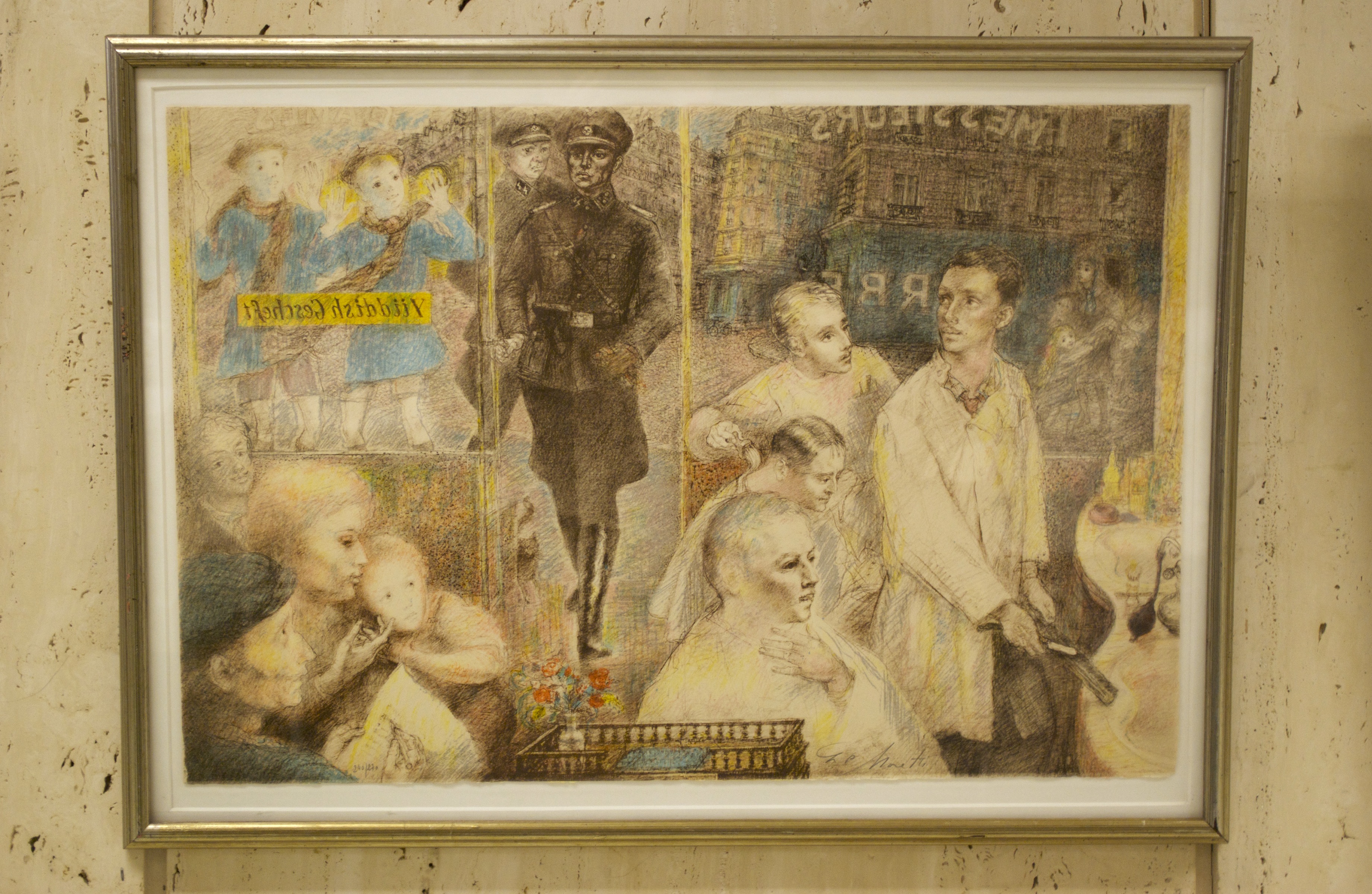
Displaced: The Semiotics of Identity, is an ambitious exhibition of art and historical artifacts that explores diverse aspects of the displacement of people and things, and its many repercussions. On display at the Wilson Library at the University of Minnesota, this sprawling exhibit inhabits walls throughout the first and the fourth floor, as well as having an online component. The exhibit’s theme is to explore the meaning made of a person’s or object’s identity in different spaces and times. The topic is in-and-of-itself huge, but the process whereby the show developed is why it is so ambitious: Displaced was curated by students.
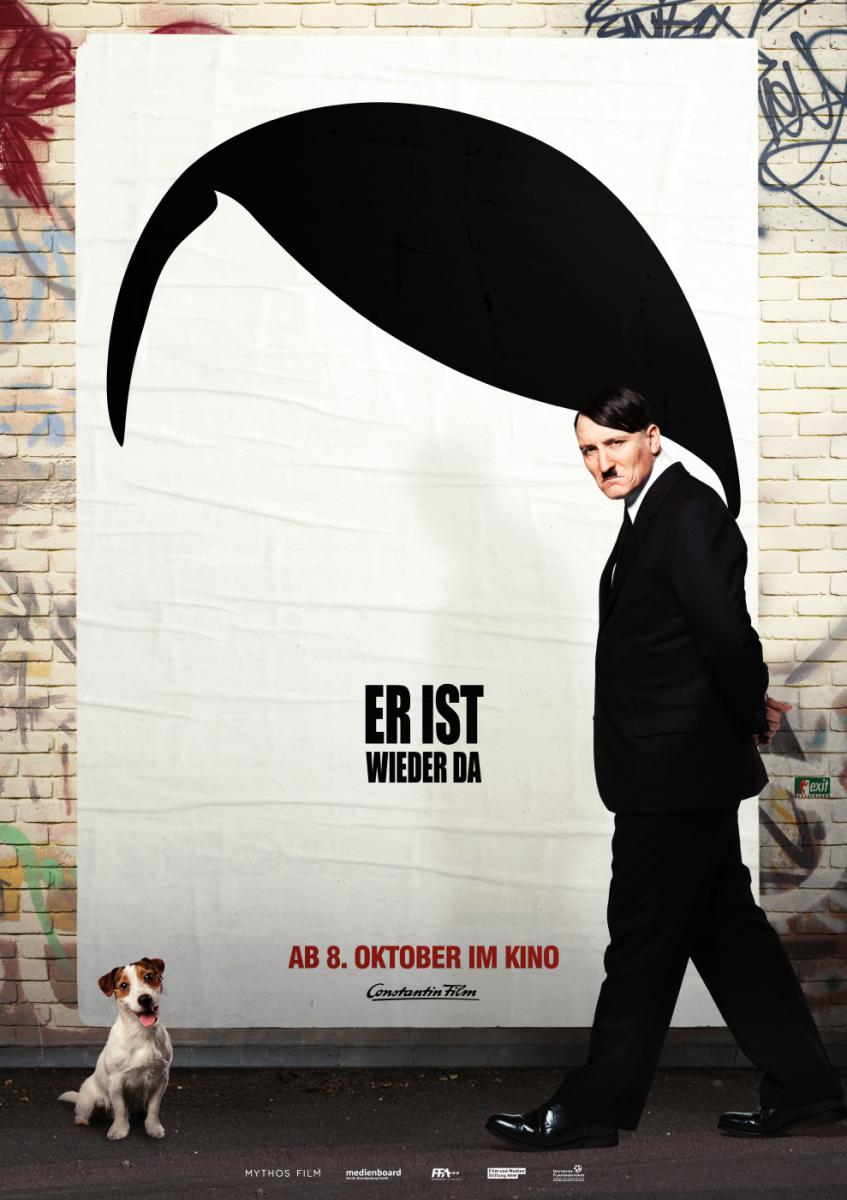 The idea of reviving a historical figure to return from the dead to our own time period is not new. Many novels and films have dealt with this premise before though usually they focus on the return of someone likable. In the German film Look Who’s Back (Er ist wieder da) we get Adolf Hitler in Berlin circa 2014.
The idea of reviving a historical figure to return from the dead to our own time period is not new. Many novels and films have dealt with this premise before though usually they focus on the return of someone likable. In the German film Look Who’s Back (Er ist wieder da) we get Adolf Hitler in Berlin circa 2014.
Billed as a comedy, Look Who’s Back opens in the clouds, reminiscent of Leni Riefenstahl’s 1935 propaganda masterpiece Triumph of the Will. At first, Look plays like a science fiction film around the return of the deceased. It turns into a buddy-road picture, as Hitler and the recently fired, down-on-his-luck filmmaker Fabian Sawatzki (played by Fabian Busch) drive about Germany in Fabian’s mother’s floral delivery van. They film people’s reactions to Hitler in the hopes that Fabian can get the footage on the air at the TV station that fired him. (These scenes are actual reactions of unsuspecting people on the street to Hitler as played by the actor Oliver Masucci.) Is it a comedy? Yes. Is it funny? Yes. There are laugh-out-loud moments, several moments of uncomfortable laughter, as well as a few cringe-inducing scenes.
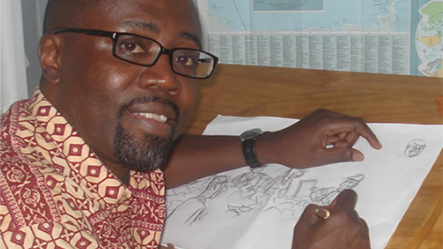 Eye on Africa has often talked about atrocities unfolding, or likely to unfold, in different African states. Most of this information is never collected by myself and is gleaned from news organizations within and outside of Africa. Journalists are perhaps the one group of people that I owe a deep gratitude to. Even when working under tough circumstances they still believe in telling the story, and telling it right. The reason I point this out is because the past year has been a fraught one for African journalists in several countries. From outright assassinations in South Sudan, to the erasure of press freedoms in Rwanda and Kenya, African journalists are quickly becoming an endangered group. So this month’s contribution will focus on the plight faced by journalists working in Africa, for without them, this column would not exist.
Eye on Africa has often talked about atrocities unfolding, or likely to unfold, in different African states. Most of this information is never collected by myself and is gleaned from news organizations within and outside of Africa. Journalists are perhaps the one group of people that I owe a deep gratitude to. Even when working under tough circumstances they still believe in telling the story, and telling it right. The reason I point this out is because the past year has been a fraught one for African journalists in several countries. From outright assassinations in South Sudan, to the erasure of press freedoms in Rwanda and Kenya, African journalists are quickly becoming an endangered group. So this month’s contribution will focus on the plight faced by journalists working in Africa, for without them, this column would not exist.
ISIS is Committing Genocide: Now what?
On March 15th, the United States House of Representatives passed an unprecedented resolution: it condemned the actions of ISIS as genocide. In a clear demonstration of the barbarity of the terrorist regime, the House resolution passed 393-0, a virtually unheard of display of bipartisan support. Two days later, the Obama administration confirmed the House’s decision, when Secretary of State John Kerry said: “My purpose here today is to assert in my judgment, (ISIS) is responsible for genocide against groups in areas under its control including Yazidis, Christians and Shiite Muslims.”
States and organizations around the country and the world have set aside April to be a month of genocide awareness, education and action against genocide.
Why April? Several genocides over the last century began in this month. The events leading to the Armenian genocide started in April 1915. The Cambodian capital of Phnom Penh fell to the genocidal Khmer Rouge regime in April 1975. Hutu extremists launched their plan to exterminate the entire Tutsi civilian population of Rwanda in April 1994.
April 1943 is also the month in which the few remaining Jews in the Warsaw ghetto rose in a desperate but heroic revolt against their oppressors. Yom HaShoah, Holocaust Memorial Day, was later established to commemorate those events, which represent unprecedented destruction but also courage, resilience and hope.
At the Center for Holocaust and Genocide Studies we see anniversaries as a valuable opportunity to advance scholarship and education. It is a chance to encourage students, educators and the broader community to deepen their understanding of past events and their sequels, as well as awareness of current manifestations of genocide and massive human rights violations.
Our programs in the next weeks reflect this mission. We started the month with an educational trip to the Bdote (Dakota for “where the rivers meet”) at Fort Snelling State Park, guided by scholar and teacher Iyekiyapiwiƞ Darlene St. Clair. Bdote is where the Dakota creation stories locate their origins, and also the site of internment, starvation and forced removal in the aftermath of the US Dakota War. “A place of genesis and genocide,” as one Dakota author eloquently put it. We will close this month of remembrance and awareness on Holocaust Memorial Day with a lecture by Sidi N’Diaye, who examines the role of hateful representations in the murders of Jewish neighbors during the Holocaust in Poland and of Tutsi neighbors during the 1994 genocide.
As we move through April, it is important to remember the quote from Holocaust historian Robert Abzug: “We must recognize that if we feel helpless when facing the record of human depravity, there was always a point at which any particular scene of madness could have been stopped.” In that spirit, this month we remember the victims of genocide and honor those who have worked tirelessly to stop it.
Thank you for supporting the work of the Center.
In February, the Center for Holocaust and Genocide Studies welcomed Pedro Correa Martín-Arroyo to discuss his research. Correa presented a lecture titled “The Spanish Paradox”, which examined the Spanish government’s policies towards the Jews, and how these were influenced by actors both within and outside the country.
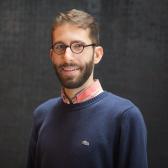 Pedro Correa Martín-Arroyo is currently the Diane and Howard Wohl fellow at the Jack, Joseph and Morton Mandel Center for Advanced Holocaust Studies (US Holocaust Memorial Museum); as well as PhD candidate at the London School of Economics. His doctoral research addresses the international management of the Jewish refugee crisis in the Iberian Peninsula and North Africa during World War II.
Pedro Correa Martín-Arroyo is currently the Diane and Howard Wohl fellow at the Jack, Joseph and Morton Mandel Center for Advanced Holocaust Studies (US Holocaust Memorial Museum); as well as PhD candidate at the London School of Economics. His doctoral research addresses the international management of the Jewish refugee crisis in the Iberian Peninsula and North Africa during World War II.
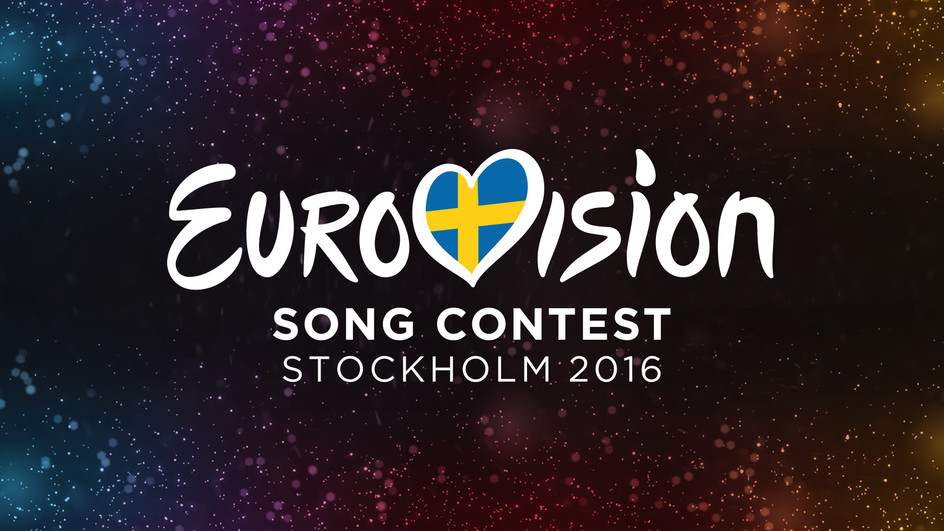 Eurovision Song Contest has served as a platform to strengthen both national and European identities and embrace diversity throughout every nation for over 60 years. The show’s vast influence expands to an audience of approximately 180 million people all over the world. Its expansive reach has not only sparked the careers of various performers, it has also allowed for the television program to have social, political, and cultural influence.
Eurovision Song Contest has served as a platform to strengthen both national and European identities and embrace diversity throughout every nation for over 60 years. The show’s vast influence expands to an audience of approximately 180 million people all over the world. Its expansive reach has not only sparked the careers of various performers, it has also allowed for the television program to have social, political, and cultural influence.
The televised contest does have strict rules; songs that promote political messages are disqualified from entry. In 2009, the song “We Don’t Wanna Put In” was the Georgian entry. The song contained negative political references to Vladimir Putin, the Prime Minister of Russia, and provided a critical Georgian perspective on the war between Georgia and Russia in 2008. Because of the song’s strong political message and references, the European Broadcasting Union ruled that the song would have to be rewritten or a new song would have to be chosen. Georgia did not comply with this ruling, and therefore withdrew from the 2009 Eurovision Song Contest.
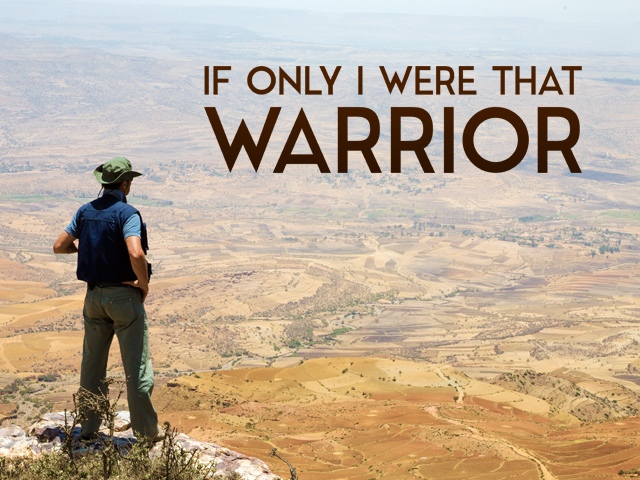 On Saturday, February 20th the Italian Cultural Center of Minneapolis & St. Paul presented If Only I Were That Warrior as part of their annual Italian Film Festival followed by a moderated discussion. In the film, director Valerio Ciriaci examines Italy’s brutal attempts to colonize Ethiopia in 1935 through the lens of the 2012 erection of a monument dedicated to Rodolfo Graziani. The monument, located in the Italian town of Affile, reignited the tense politics surrounding Graziani’s involvement in the Italian invasion of Ethiopia and its legacy today.
On Saturday, February 20th the Italian Cultural Center of Minneapolis & St. Paul presented If Only I Were That Warrior as part of their annual Italian Film Festival followed by a moderated discussion. In the film, director Valerio Ciriaci examines Italy’s brutal attempts to colonize Ethiopia in 1935 through the lens of the 2012 erection of a monument dedicated to Rodolfo Graziani. The monument, located in the Italian town of Affile, reignited the tense politics surrounding Graziani’s involvement in the Italian invasion of Ethiopia and its legacy today.
